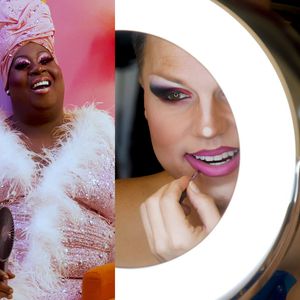Every year during back-to-school season, our newsfeeds get taken over by stories of dress code double standards and girls being sent home to change before they’re allowed to be in class. Sometimes, what they’re wearing when this happens seems perfectly acceptable. An oversized shirt with leggings. Jeans and a shirt that covers shoulders and cleavage, but that
dared to bare a collarbone.
The overall message that our society sends to girls when this happens is that their education is not as important as their appearance. Young girls subjected to gender discrimination via a dress code learn early on that their worth is based at least in part on their bodies and their sexuality. Dress codes also often reinforce gender stereotypes and make it difficult for people who bend the rules of gender expression.
Here are eight dress code rules that girls keep running afoul of. Is your least favorite on the list?
1. No colored bras
For schools that require white shirts, sometimes they also require a skin-colored bra. This was the case at my school in Texas, and it was the scandal of the year. Many girls protested by deliberately wearing their colorful bras. It was a great day until we all got in trouble.
2. Skirts and shorts must be fingertip length… unless you’re tall
A Virginia high schooler was kicked out of her prom in May 2014 because the fathers chaperoning the event thought her dress would inspire “impure thoughts” in the boys. Her dress was fingertip length, per the dress code, but because she had long legs, the fathers thought it looked shorter. The fingertip length rule is not universally applied to all girls, and it is therefore unfair.
3. Girls have to wear drapes in their senior photo
In August 2009, a student in Mississippi found out her senior portrait would be banned from the yearbook because she had rejected the drape in favor of a tuxedo. The principal released a statement saying that the school’s decision was “based upon sound educational policy and legal precedent.”
4. Only boys can wear tuxedos to prom
This past spring, an openly gay high school senior named Claudette Love
challenged her Louisiana school’s prom dress code. According to the principal, “girls wear dresses and boys wear tuxes, and that’s the way it is.” Claudetteia’s fight won attention from the media, and subsequently the school relented. The sexual orientation policing that happens at prom extends past the dress code, of course. A Missouri teenager
came up against his school’s rule against bringing a same-sex date to prom and won. A school in Mississippi actually
canceled their prom in 2010 in order to prevent a lesbian couple from attending.
5. Common natural hairstyles are banned
There are far too many examples of the enforcement of the baffling collection of rules designed to police black hair. In 2013, a 12 year old girl in Florida
was told her natural hair was too long and it needed to be cut or she would be expelled. In that same year,
a school in Ohio tried to ban afro puffs and braids. An Oklahoma school
sent a seven year old girl home in tears when she came to class in dreadlocks. And the list goes on.
6. Girls have to wear shirts/one pieces to pool parties
In May of this year, an Indianapolis school held a pool party for their sixth-graders that
required the girls wear non-white shirts over their swimsuits. The feminist mother of one of the boys challenged the rule and got it changed to say that shirts were optional. Plenty of schools and youth groups also require girls to wear one-pieces, because heaven forbid we see a girl’s stomach.
7. Girls must have long hair
In March of 2014, a girl’s grandparents
removed her from her Christian school in Virginia when they received a letter saying the girl wouldn’t be allowed to enroll the following year because her allegedly masculine appearance didn’t follow the school’s “biblical standards.” The letter went on to say, “We believe that unless Sunnie as well as her family clearly understand that God has made her female and her dress and behavior need to follow suit with her God-ordained identity, that TCS is not the best place for her future education." The short-haired girl was eight years old at the time.
8. No piercings, tattoos, or dyed hair
A student in North Carolina
sued her high school when they said she couldn't come to school with her nose pierced. Rather than spend money and time on a court case, the school decided to relent. A Missouri student
was suspended in March of this year when, during a fit of snowed-in boredom, she dyed her hair a "deep ultra-intense red." While the color does occur naturally, apparently the school still found it to be a violation of their rules that hair must be a natural color.

























































































































